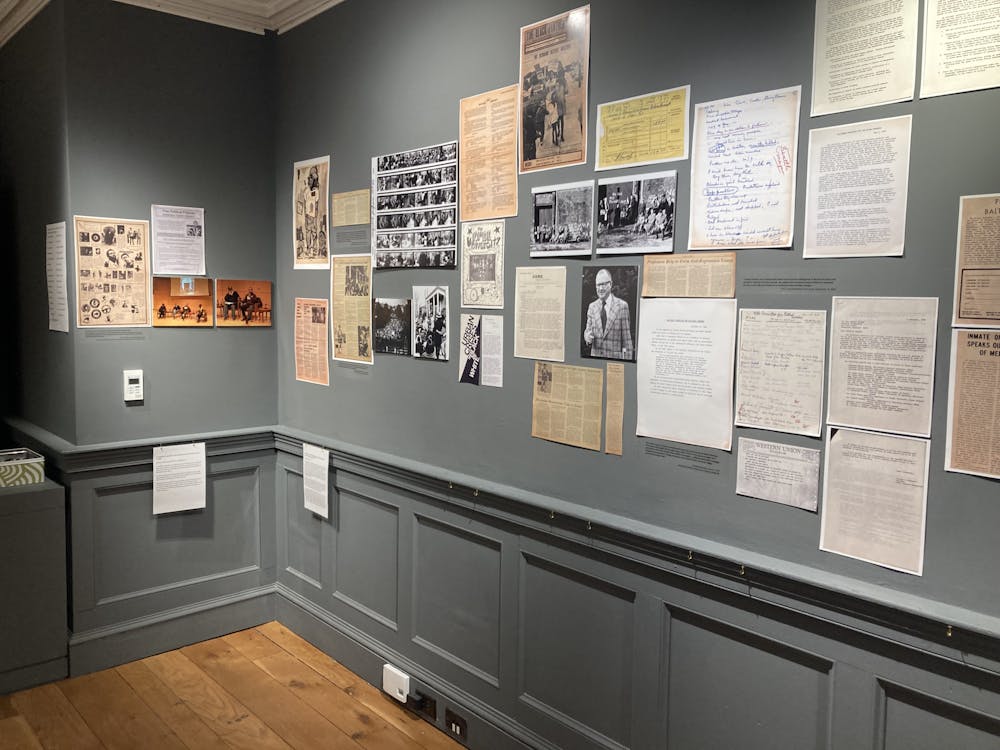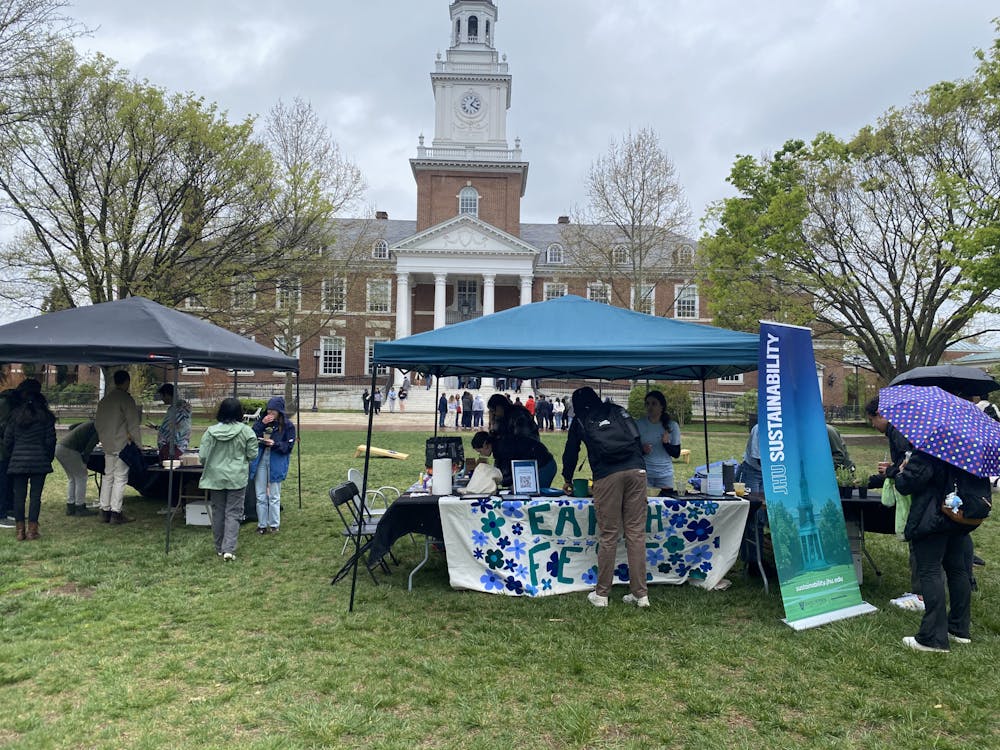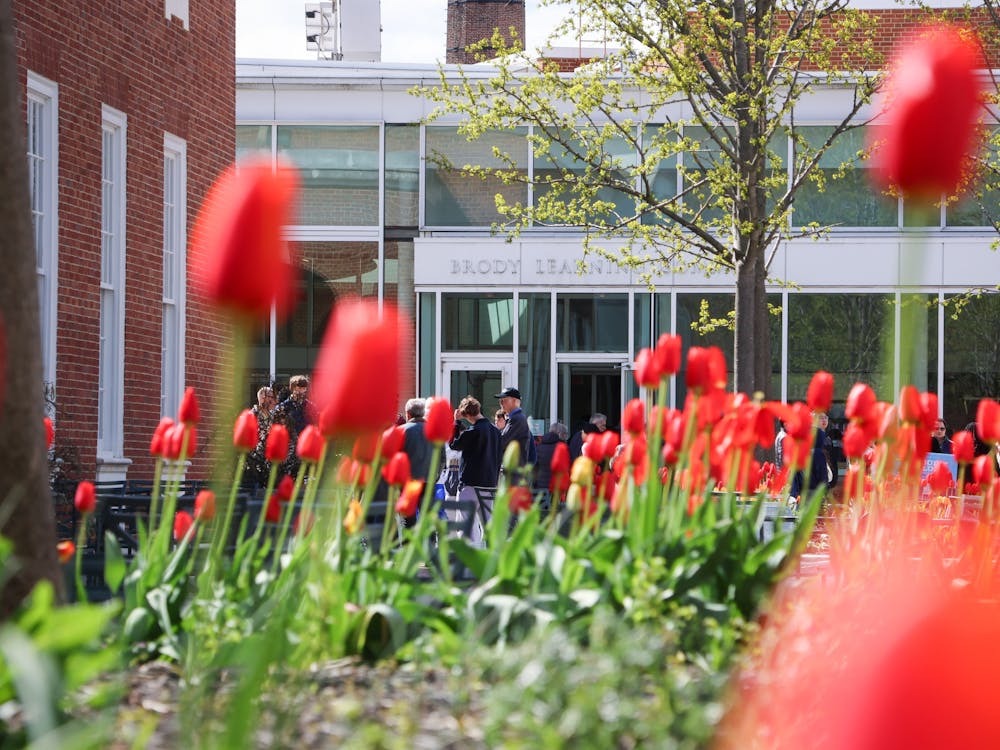The Public Health Student Forum hosted their 7th annual Public Health Conference entitled More Life for More Lives on Tuesday in Shriver Hall. Several undergraduates presented their research on topics ranging from race and mental health to prenatal health for pregnant women in Tanzania. Student health organizations were also highlighted at the conference.
Following research presentations, students had the opportunity to attend a networking dinner with health professionals in Baltimore, which included former Baltimore City Health Commissioner Dr. Peter Beilenson, Associate Dean for Public Health Practice and Training at the Bloomberg School of Public Health Dr. Joshua Sharfstein, U.S. Public Health Service Epidemic Intelligence Service Officer Dr. Iman Martin, Director of Safe Streets Baltimore of the Baltimore City Health Department Debra Layne, CEO of Afaxys Pharmaceuticals Ronda Dean and Director of the Drug Addiction Treatment Program at Open Society Foundations Dr. Scott Nolen.
United States Surgeon General Dr. Vivek H. Murthy was the featured keynote speaker of the event.
Public Health Student Forum President Gauri Bhatnagar said that the conference has evolved and expanded over the years.
“The magnitude of [this year’s] conference is just so much bigger,” Bhatnagar said. “It started off really small with students being able to display their research… now it’s really something extraordinary on this campus. We’re getting really important public health figures from around Baltimore, we’re getting distinguished professors from [the] Bloomberg [School of Public Health], and normally our venue is in the Glass Pavilion or Charles Commons, but this year, due to the amount of people interested, we had to move to Shriver. Everything is just getting bigger and better.”
She hoped that attendees of the conference learned about the the role that public health plays in their lives.
“I personally didn’t realize how important public health was on a day-to-day basis. Public health is everything,” Bhatnagar said. “Public health is the water you use to brush your teeth, the doctor you go to see, the availability of groceries in your community. Just by looking at all the presentations, all the posters, listening to all the [speeches], you get to see all the different aspects that people have researched.”
Bhatnagar explained that the organization chose the conference’s theme, More Life for More Lives, to highlight new research on improving quality of life.
Students shared their research through poster presentations. Junior Diego Luy’s project, entitled Watch and Wait: No Role for Routine Repeat Cranial CT for Patients with Mild Traumatic Brain Injury (TBI), was inspired by his aspirations of becoming a neurosurgeon.
“My father, he suffered a traumatic brain injury after we crashed when I was a couple months old,” Luy said. “He was comatose for several days and a neurosurgeon brought him back. That’s the reason why I want to be a neurosurgeon; that’s the reason I want to [research] traumatic brain injury.”
Luy worked with the head of neuro-trauma at the University of Maryland, one of the only places in the nation that has a dedicated shock-trauma center. His research dealt with mild TBI and the Glasgow coma scale, which measures the severity of such injuries. Current protocol is set up to have CT scans at different time intervals for patients who are shown to have mild TBI. However, Luy’s research demonstrated that for patients who didn’t undergo surgical intervention, the 6 hour mark CT scan was not only unnecessary, but costly and exposed patients to harmful excess radiation.
Freshman Jane Shin’s project, What Really Determines Your Health, focused on social determinants of health, specifically concentrating on early childhood development for preschool-aged children. She discovered that parent-child interactions and preschool education are the most significant factors in childhood development and can be associated with health problems later in life. Shin explained that she became interested in the topic through her courses in the Public Health department.
“I took the class Public Health and Wellbeing in Baltimore and [learned about] child-development in kindergarten. That’s when I realized that there’s actually a really strong correlation between education and public health,” Shin said.
Junior Jhillika Patel’s poster, Subjective Health Record Device: Revolutionizing the Patient Waiting Room Experience, showed how she developed an electronic device to increase clinical workflow and improve the patient waiting process. She saw that many patients became frustrated in the waiting room while working at the Johns Hopkins Bayview Medical Center. Patel collaborated with researchers at Carnegie Mellon to develop the device and is in the process of getting it patented.
Students spoke at length about the research projects they had undertaken. Seniors Benita Pursch and Rachel Viqueira shared the results of research they conducted over the summer in Mkushi, Zambia. Pursch’s senior thesis, Child-Level Data Monitoring Challenges and their Implications in Mkushi, Zambia, focused on the challenges that rural health facilities face in collecting data and providing adequate care. Viqueira’s thesis, Determinants of Childhood Aflatoxin Exposure at the Individual and Household Levels in Mkushi, Zambia, explored various factors that could cause children to be vulnerable to the toxic compound aflatoxin.
Senior Diamond Hale’s presentation, called Disentangling Race and Place in Depressive Symptoms in Men, examined the relationship between race and mental health in southwest Baltimore. Hale discovered that systemic inequality plays a more significant role in contributing to depressive symptoms than race alone.
Junior Kylie Tora Basuki Liu revealed that physical obstructions at home can dramatically lead to mobility problems for the elderly in her presentation Education, Household Hazards and Mobility Limitations among Older Adults: Findings from the National Health and Aging Trends Study.
Senior Madelyn Goodman’s presentation, How Community Health Workers Build Rapport to be Notified of Pregnant Women in Morogor Region, Tanzania investigated the methods that health workers utilize to overcome barriers in providing information and healthcare for women in early pregnancy.
Co-president of Supporting Hospitals Abroad with Resources and Equipment (SHARE) Claudia Tan, a senior, attended the conference to inform students about her organization’s work.
“We go down to the Johns Hopkins Hospital and we work with the medical and nursing students to collect unused medical supplies from the operating rooms,” Tan said. “When surgeons walk into the OR, they basically get a big bag full of stuff for their surgery, but most of the time they only use a couple of items. By US law, they’re required to throw [all of the unused supplies] out which results in a lot of medical waste.”
SHARE sorts and boxes the remaining supplies to send to developing countries. These boxes are often taken to other countries on mission trips by organizations such as Humanity First. Following Typhoon Haiyan, SHARE sent supplies to help with relief efforts in the Phillippines. They also sent supplies to Africa during the Ebola outbreak. On average, SHARE boxes about 1,000 pounds of supplies every month.
“We’re involved in a lot of public health issues so it’s great for organizations because [the supplies] are all free for them. We’re not only reducing medical waste, but also helping out people at the same time,” Tan said.















Please note All comments are eligible for publication in The News-Letter.